Breeding
Semen collection
Boar semen collection is used widely in the agriculture sector. Boars used for semen collection are generally kept in small stalls with minimal room to move around. To collect semen, a 'dummy' or oestrus sow is used for the boar to mount.
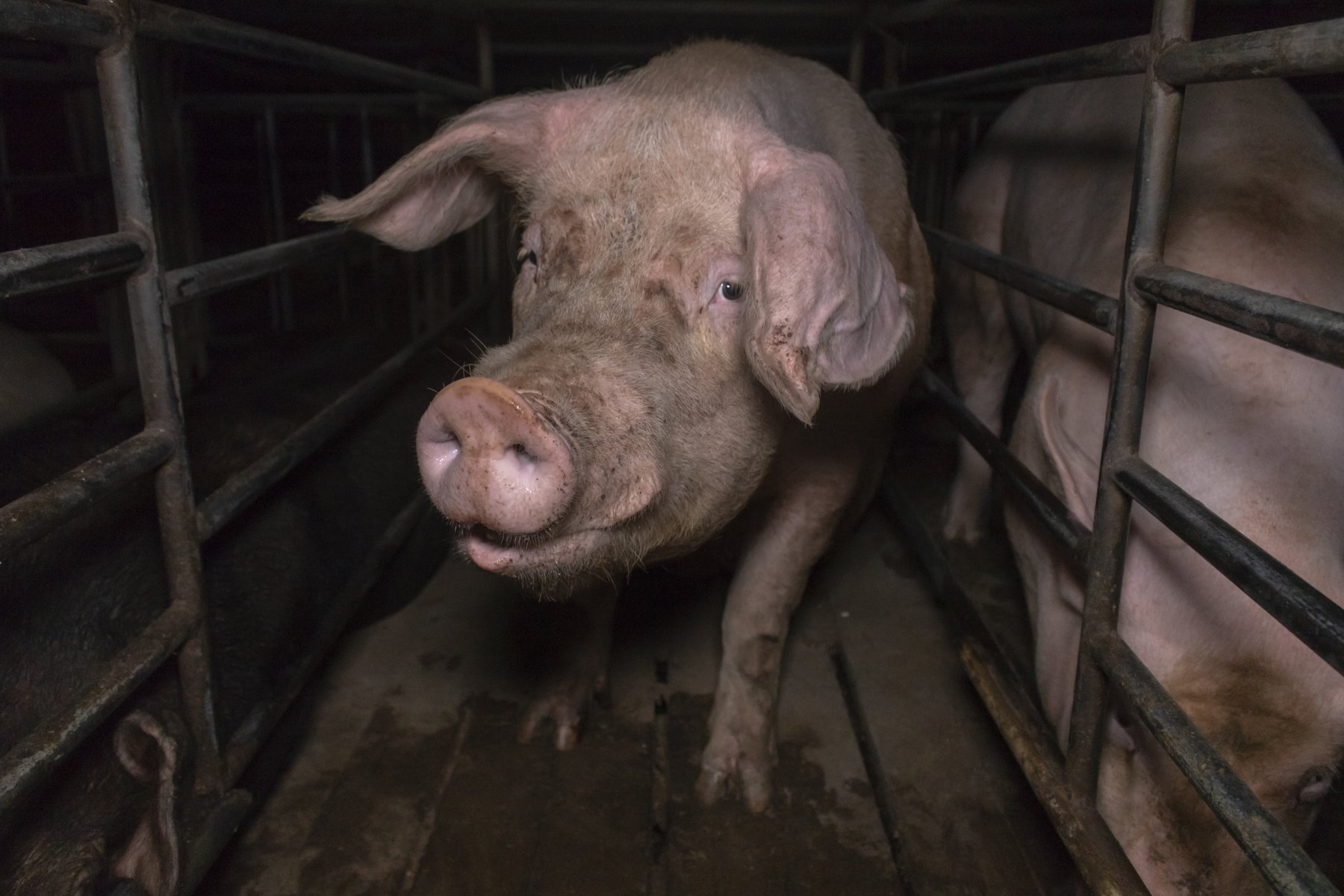 A boar confined at a semen collection facility: Queensland, Australia.
A boar confined at a semen collection facility: Queensland, Australia.
The Queensland Department of Agriculture and Fisheries provides detailed instructions on arousing boars, training them to mount dummy sows, and collecting and storing semen.
 Dummy sow diagram from Queensland Government Department of Agriculture and Fisheries.
Dummy sow diagram from Queensland Government Department of Agriculture and Fisheries.
It is outlined by the Queensland Department of Agriculture and Fisheries that:
- Dummy sows are placed in the pen of the boar; it is advised that the smell of another boar's semen, saliva, and sow urine, smeared on the dummy, will stimulate the boar to mount and thrust.
- If the boar does not mount the dummy sow, a real sow is used so that the farmer can collect the boar's semen from her to smear on the dummy, attracting him to it.
- When the boar is mounted on the dummy sow, the farmer grips the boar's penis allowing the boar to thrust, then applying pressure on his penis, imitating a sow's cervix, causing the boar to ejaculate.
Boars are forced to repeat this exploitative cycle up to 3 times every week. The legally accepted space requirement for boars confined in stalls is 0.7 metres by 2.4 metres long.
Bestiality is a criminal offence under the Crimes Act 1958; however, for the purpose of agriculture and scientific testing, these laws do not apply.
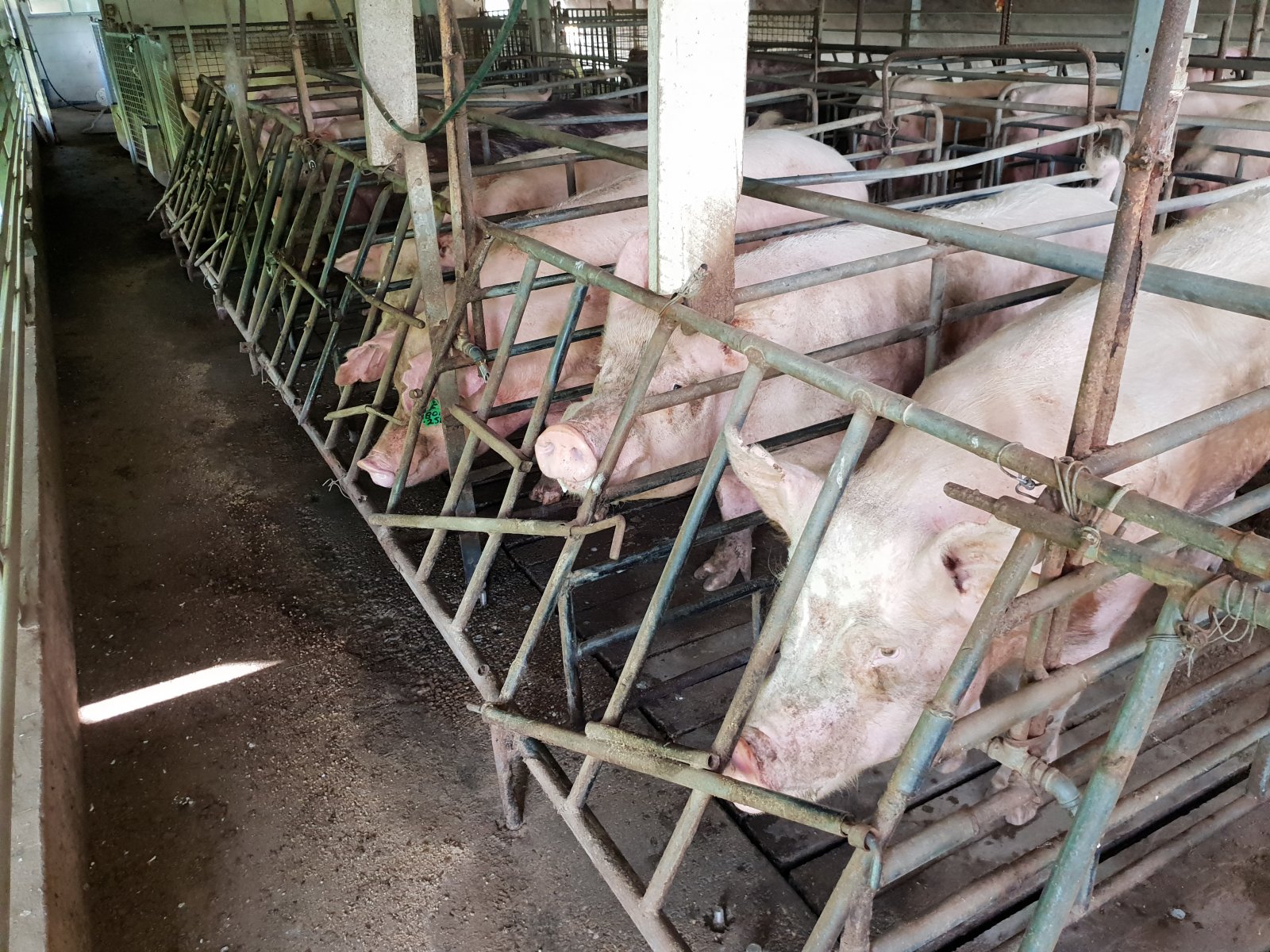 Rows of boars at a semen collection facility; Queensland, Australia.
Rows of boars at a semen collection facility; Queensland, Australia.
Investigation has revealed the appalling conditions of a boar semen collection facility in Queensland, Australia.
Artificial insemination
The artificial insemination of sows is another common practice throughout the pig farming industry.
The Queensland Department of Agriculture and Fisheries provide detailed instructions on how to forcefully artificially inseminate sows.
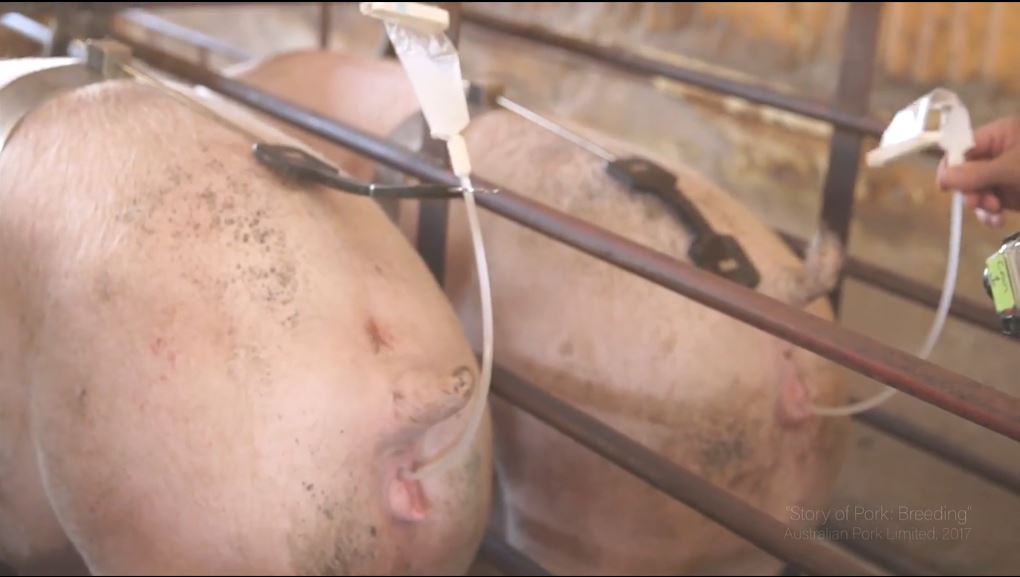 Artificial insemination (AI) of sows. Source: Australian Pork Limited
Artificial insemination (AI) of sows. Source: Australian Pork Limited
It is outlined by the Queensland Department of Agriculture and Fisheries that there are two methods of inseminating a sow:
Cervical Artificial Insemination (CAI) or Introduction of Semen into the Cervix
-
The farmer cleans the area around the sow's vulva.
-
The farmer sexually stimulates the sow in the presence of a boar to induce the mating stance.
-
The farmer inserts the catheter into the sow's vagina to lock it with her cervix. The boar's semen is deposited at her cervix.
-
The farmer continues to sexually stimulate the sow for several minutes after the semen enters her reproductive tract.
Post-Cervical Artificial Insemination (PCAI) or Intra Uterine Method
The farmer uses a foam tipped rod (catheter). Inside the rod is a second catheter or sleeve, which is pushed through the rod and beyond the sow's cervix. The sleeve threads through her cervix and deposits the semen directly into her uterine body.
-
To sexually stimulate the sow, the farmer uses a mature 'spotter' boar, but they are separated by a pen division and never allowed to naturally mate.
-
The farmer removes the boar, and the sow rests for 30 minutes.
-
The farmer cleans the sow's vulva with a paper towel to avoid drawing particles and micro-organisms into the female genital tract during insemination.
-
The farmer then sexually stimulates the sow (in the presence of a mature boar) to induce the mating stance. The farmer does this by applying pressure between the sow's shoulder and midback, applying knee pressure to her flanks and massaging her vulva and udder.
-
The farmer lubricates the tip of the catheter with a small amount of semen. The farmer parts the lips of the sow's vulva and inserts the catheter upwards into her vagina until resistance is felt at the opening of her cervix.
- The farmer inserts the catheter further inside her, as far as it will go.
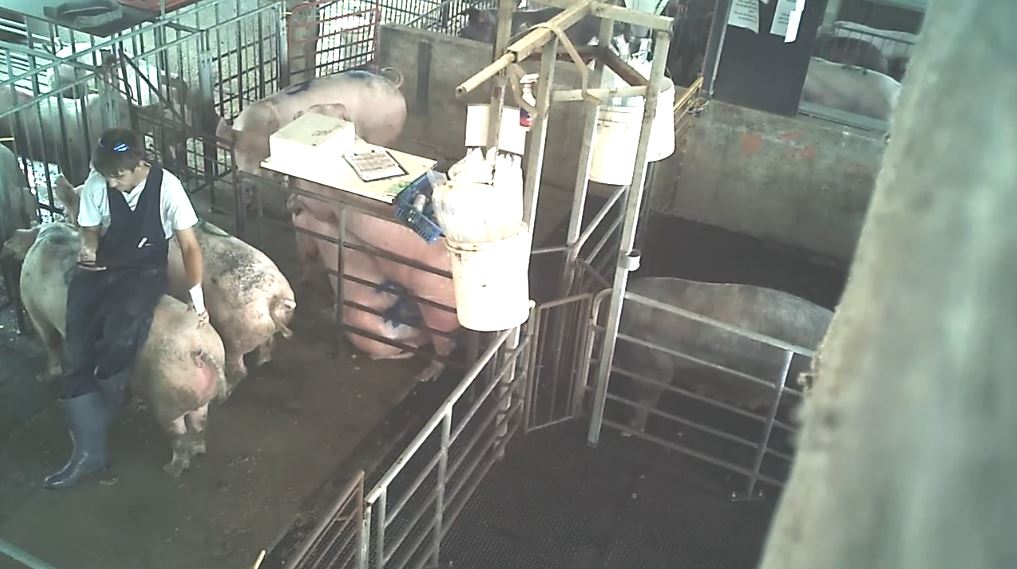
In nature, sows would not only choose their mate and when to breed, but they would move to a private location, build a nest, and prepare for their new arrivals. Viewed merely as 'bacon incubators' by the industry, these mothers are deprived of every experience and decision important to their lives.

Diagrams for sow artificial insemination. Source: Queensland Government Department of Agriculture and Fisheries.
The artificial insemination process can last for as long as 10 minutes. Sows are forced to have repeated litters until their bodies can no longer withstand this cycle of abuse, at which point they are killed. Productivity is measured by how many living piglets a sow gives birth to; the more litters sows are forced to have (the higher the 'parity'), the more stillborns she is likely to birth.
The Queensland Department of Agriculture and Fisheries outlines how the timing of insemination, according to the sow's fertility cycle, helps to maximise the chances of pregnancy through artificial insemination.
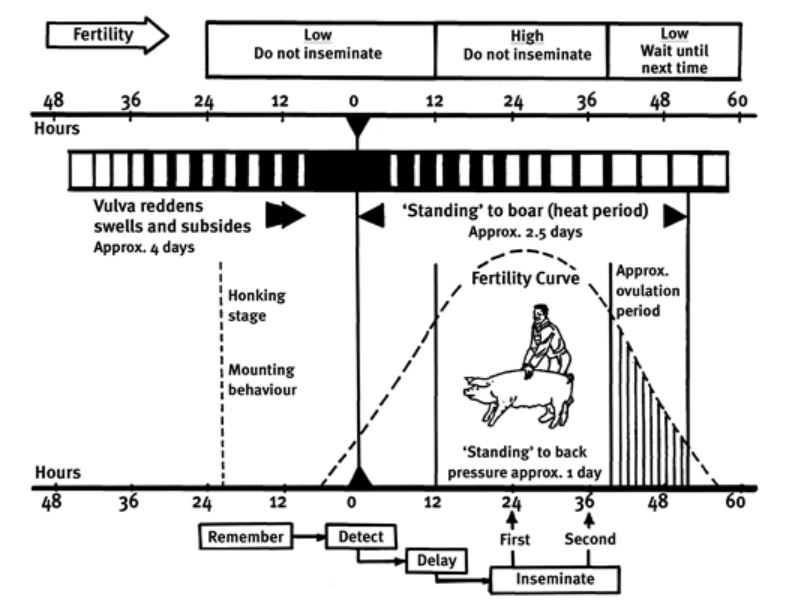
Sow's fertility cycle. Source: Queensland Government Department of Agriculture and Fisheries.
While pigs can live to around 15 years of age, female breeding pigs rarely live past two or three years. They often die or are killed ('culled') due to injuries they have incurred as a result of continuous forced impregnation, birthing, and feeding of their young.
According to the Faculty of Veterinarians at the University of Sydney, "major causes of sow death include bladder and kidney infections, gastric accidents (twists, bloat, and stomach ulcers), heart failure/heatstroke, blood poisoning (septicemia) and uterine prolapses." If they manage to survive the several years of laborious and monotonous existence, they are then killed as their declining fertility renders them unprofitable.
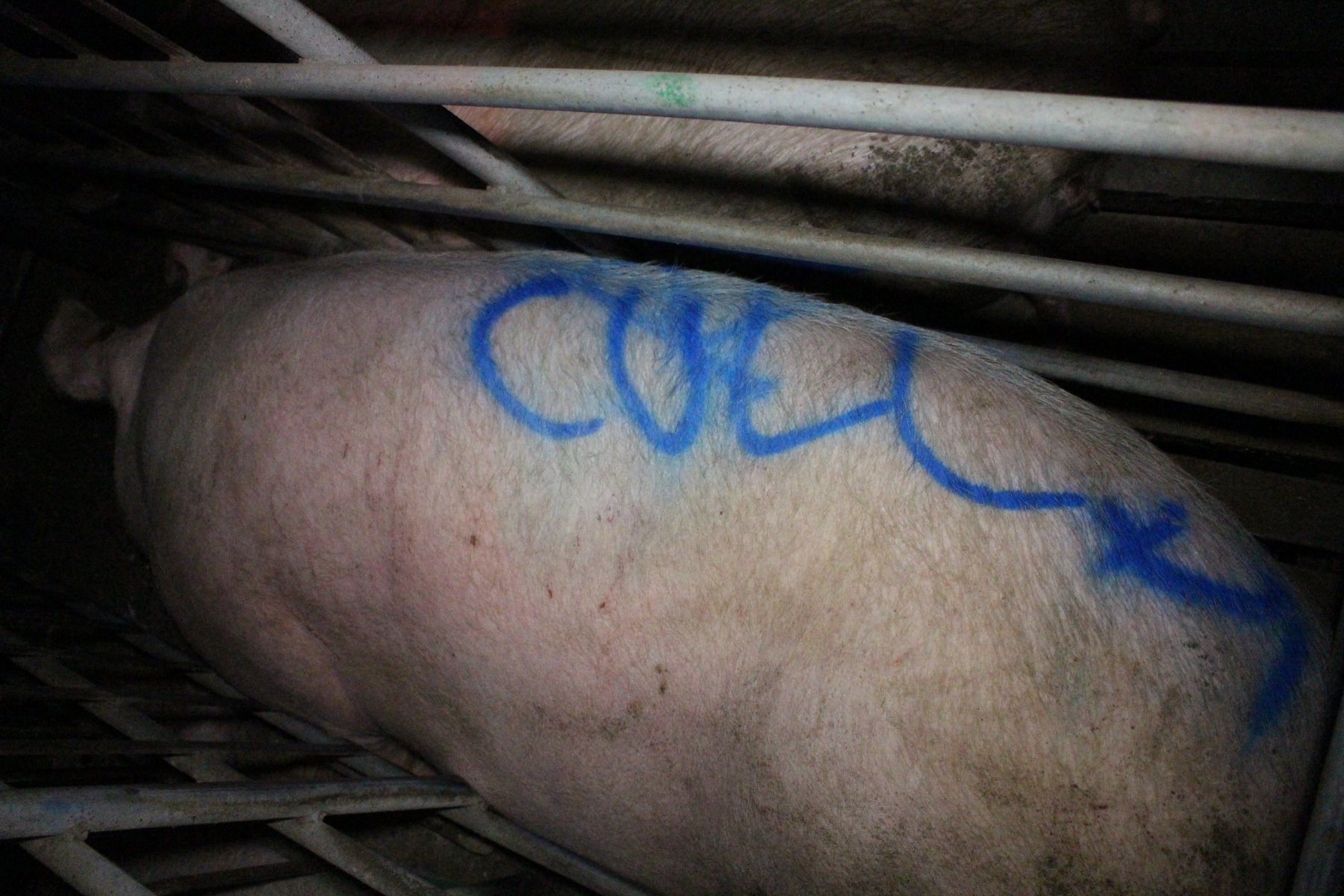 Sow in a farrowing crate with 'cull' written on her back.
Sow in a farrowing crate with 'cull' written on her back.
There are over 285,500 female pigs in Australia housed on about 2,000 farms.
The accepted combined death rates of female breeding pigs (both natural and via euthanasia) is 9% per year (Faculty of Veterinarians at the University of Sydney).


